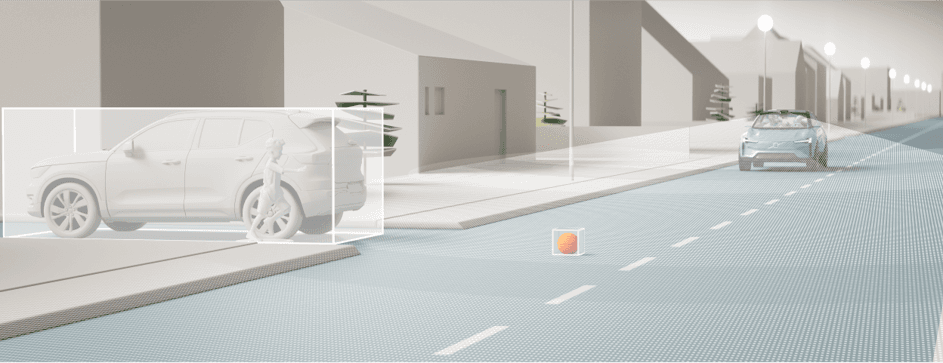Volvo Car Group has announced that it will introduce its unsupervised autonomous driving technology in California first. Called Ride Pilot, the system builds on the Swedish brand’s safety leadership in the auto industry and aims to give owners back more time. The system will appear on Volvo’s next-generation battery-electric vehicles, the first of which is the successor to the XC90, which is due sometime this year.
Once Ride Pilot has been verified as safe to use on highways, it will be available as an add-on subscription. The XC90’s successor will enable Volvo to set a new standard in terms of safety thanks to over-the-air (OTA) update capability and a new sensor setup for its driver assistance features. The software for the autonomous driving systems is being developed in-house by Volvo alongside two partners, Zenseact and Luminar. This new setup consists of over two dozen sensors including Luminar’s Iris LIDAR sensor, which will work together with software. This will work together with five radars, eight cameras, and 16 ultrasonic sensors in Volvo’s upcoming EV to provide excellent vision and perception reliability. Continuous OTA software rollouts will ensure full redundancy and improve safety while operating autonomously.
“We are proud to announce the planned US launch of our first truly unsupervised autonomous driving feature, as we look to set a new industry standard for autonomy without compromising safety,” said Mats Moberg, Head of Research and Development at Volvo Cars. “Having Zenseact’s brand-new AD software and Luminar’s LIDAR standard in our new fully electric SUV is a game-changer for Volvo Cars, as well as for automotive safety and autonomous driving.”
Volvo and Zenseact are already testing autonomous driving functions in Sweden and collecting data from Europe and the U.S. It intends to start testing in California by the middle of this year where the climate, traffic conditions, and regulatory framework provide the ideal environment to introduce autonomous driving. California will be the first market to get Ride Pilot once it has been deemed safe and the required approvals have been received.
Ride Pilot aims to give time back to people instead of using it to operate a vehicle. This will allow consumers to do other activities while on the move. Volvo believes that this can help them arrive at their destination refreshed and recharged because it reduces the mental strain that may come with the act of driving especially in heavily congested areas. When Ride Pilot is engaged, Volvo takes responsibility for driving the vehicle.
The first of Volvo’s next-generation battery-electric vehicles is a flagship crossover that will succeed the XC90 and was previewed by the Concept Recharge. Reportedly called the Embla, it will be underpinned by the second-generation SPA platform that will be shared with the Polestar 3, its performance-oriented cousin. Both crossovers will be built at Volvo Car Group’s Charleston, South Carolina facility, which currently builds the S60 sedan. Eventually, the SPA2 platform will underpin the successors of the current 90-series and 60-series models in Volvo’s lineup. It will also be the foundation for a Polestar-specific aluminum-intensive architecture that will debut in 2024 on the Polestar 5 four-door grand-tourer. Although Volvo will be the first brand to offer the Ride Pilot autonomous driving system, expect it to eventually find its way to the Polestar brand soon.

